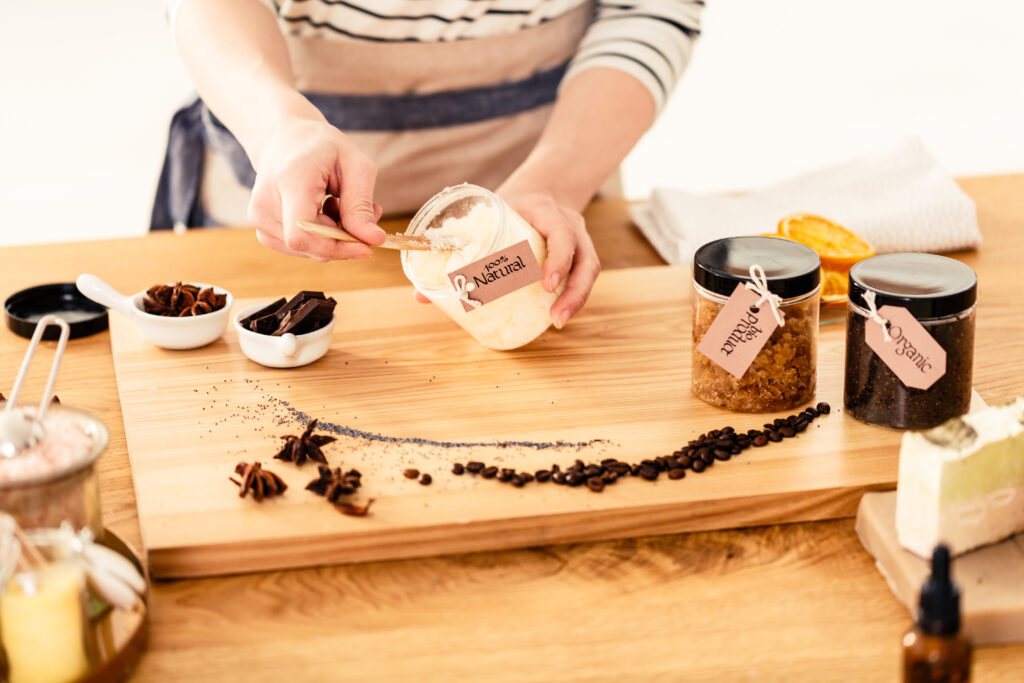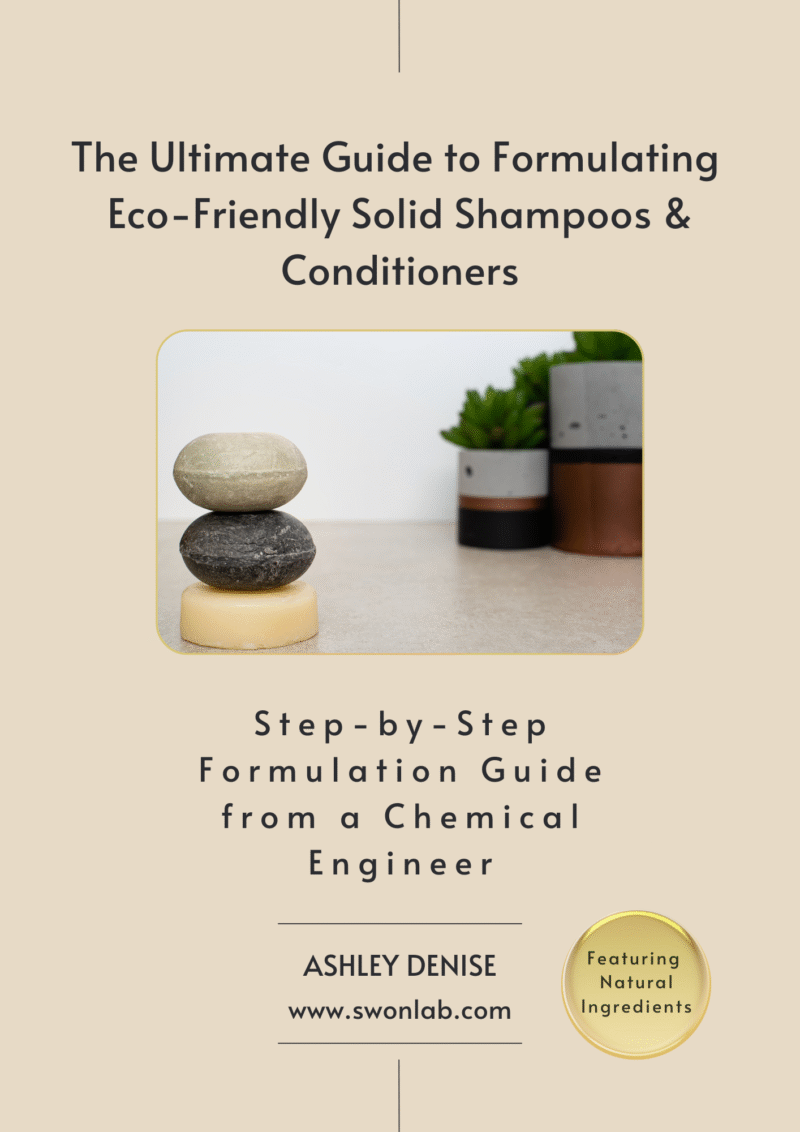Making your own shampoo at home sounds empowering, right? Just a few natural ingredients, a cute little bottle, and boom—you’ve eliminated harsh chemicals from your life. At least, that’s the idea.
But here’s the truth: while DIY beauty can be beautiful, not all recipes are safe or effective. In fact, many of the most shared homemade diy shampoo recipes on the internet—some of them wildly popular—contain ingredients or combinations that could irritate your scalp, damage your hair, or just flat-out not work.
We’re not here to call anyone out. Honestly, most of these recipes come from well-meaning creators who genuinely want to ditch toxins and help others do the same. But when it comes to skincare and haircare—especially rinse-off products used frequently—good intentions need to be backed by science.
So let’s take a calm, constructive look at the 7 most common mistakes found in homemade shampoo recipes—and what to do instead.
1. Castile Soap: Not Always Hair’s Best Friend
🧼 The Mistake: Many diy shampoo recipes use liquid Castile soap as a base because it’s natural, widely available, and eco-friendly. But Castile soap has a high pH—often around 9 or above. Meanwhile, our scalp and hair prefer an acidic environment (around pH 4.5–5.5).
📉 Why It Matters: Using high pH cleansers regularly on hair can lift the cuticle layer, causing frizz, tangles, dryness, and even breakage over time.
✅ What to Do Instead: Look for gentle, pH-balanced surfactants—especially non-ionic or amphoteric ones like decyl glucoside, coco-betaine, or sodium cocoyl isethionate. These cleanse without disrupting your scalp’s natural acid mantle.
2. Coconut Milk + No Preservative = Trouble
🥥 The Mistake: Coconut milk sounds dreamy. It’s rich, creamy, moisturizing, and often used in natural haircare. But it’s also a water-based food product, which means it’s highly perishable.
🦠 What Can Go Wrong: When mixed into a DIY shampoo —often without any preservatives—it becomes a breeding ground for bacteria, mold, and yeast. Even if it looks and smells fine, microbial growth can happen fast, especially at room temperature.
✅ What to Do Instead: If your recipe contains any water-based ingredients (like coconut milk, aloe vera juice, herbal infusions, or hydrosols), you must include a broad-spectrum preservative suitable for the pH of your formula. Leucidal Complete, Geogard ECT, and Optiphen are examples, but they still require testing for stability and compatibility.
🧠 Quick Note: Coconut milk sold for cooking—especially canned or homemade versions—is considered a food ingredient, not a cosmetic-grade raw material. Unlike ingredients specifically processed for skincare formulations, food products are not tested for microbial stability, long-term preservation, or compatibility with other cosmetic components. If you're formulating something that sits on a shelf, touches your scalp, or is used regularly, it's best to use ingredients sourced and preserved for cosmetic use.
3. The No-Poo Method Isn’t for Everyone
🌿 The Mistake: Baking soda and apple cider vinegar—the infamous “no-poo” duo—are often recommended as natural shampoo alternatives. Some people swear by it. Others… well, not so much.
😖 Potential Issues: Baking soda is highly alkaline (pH ~9), which can dry out or irritate sensitive scalps. Apple cider vinegar, although acidic, may not restore balance effectively if overused. Many people report increased itchiness, dullness, or even hair loss after trying this routine.
✅ What to Do Instead: Everyone’s hair and scalp chemistry is different. If you’re exploring minimalist routines, try pH-balanced, low-foaming cleansing conditioners or shampoo bars made with mild surfactants instead.
4. Essential Oils Are Potent—Not Just Pretty
🌸 The Mistake: Some DIY shampoo recipes use essential oils heavily—20+ drops per 1/2 cup of product. That may smell great, but it’s not always safe.
🚫 Why It’s a Problem: Essential oils are highly concentrated plant compounds. Used in excess, they can cause scalp irritation, sensitization, or even allergic reactions—especially in children or those with sensitive skin.
✅ What to Do Instead: Keep EO concentrations low—typically around 0.5–1% of your formula. For leave-on products or children’s haircare, even less is often advised. And always dilute in a carrier oil or emulsion base.
⚖️ Formulator's Tip: Essential oils should always be weighed using a precision scale, not measured in drops. Why? Because drop size varies widely by oil type, dropper, and even temperature. Accurate dosing is especially important due to the dermal limits set by organizations like IFRA (International Fragrance Association). For example, oils like cinnamon or clove have extremely low safe usage levels on skin—just a few tenths of a percent. Measuring by weight ensures you stay within safe limits and avoid sensitization over time.
5. Incompatible Ingredients = Separation and Sticky Hair
🧪 The Mistake: Many DIY recipes mix Castile soap, coconut milk, carrier oils, and essential oils together. But without proper emulsifiers or stabilizers, these formulas separate quickly—and don’t apply evenly to hair.
💡 Why That Matters: You may end up with oil slicks on some parts of your hair and dry, stripped strands on others. Not ideal.
✅ What to Do Instead: For a stable mixture, especially when combining oils and water-based ingredients, use proper emulsifiers or solubilizers. Even a natural thickener like xanthan gum or guar gum can help, but for real emulsification, something like BTMS-50, emulsifying wax, or cetearyl alcohol + PEG emulsifiers may be needed—depending on the formula type.
6. “Just Store in the Fridge” Isn’t a Preservation Method
🧊 The Mistake: It’s common to see advice like, “Just make small batches and keep it in the fridge!” While this sounds logical, it’s risky.
🔬 Why It’s Not Enough: Each time you open and use your DIY shampoo, you introduce bacteria—even with clean hands. Cold storage slows microbial growth but doesn’t stop it. And some bacteria and fungi grow even at low temperatures.
✅ What to Do Instead: If your product contains water, always use a preservative. And don’t worry—being cautious about preservatives is completely normal. It often comes from a fear of the unknown. But instead of avoiding them altogether, try learning which ones are safe.
There are plant-derived, skin-friendly preservatives that are designed specifically for cosmetics, tested for safety, and won’t cause irritation. Examples like Leucidal Complete, Geogard ECT, and Preservative Eco are great starting points. Once you understand them, preservatives become less scary—and more like the helpful protectors they really are.
7. “Natural = Better” Isn’t Always True
🌱 The Mistake: There’s a widespread belief that if something is natural, it must be safer or better for you.
⚠️ Reality Check: Many natural substances are highly active (like essential oils, clays, acids, herbal extracts) and can be irritating or unstable. On the flip side, many synthetic cosmetic ingredients are extensively tested, stable, and designed to be gentle—even safer than some “natural” counterparts.
✅ What to Do Instead: Evaluate ingredients based on function, compatibility, safety, and performance—not just whether they come from a plant or a lab.
So… What Does a Good DIY Shampoo Look Like?
Here’s a checklist to help guide safer homemade shampoo formulation:
- ✅ pH-balanced (ideally 4.5–5.5)
- ✅ Includes a broad-spectrum preservative if water is present
- ✅ Uses gentle, effective surfactants (not just soap)
- ✅ Stabilized with emulsifiers if combining oils and water
- ✅ Tested in small batches before regular use
If that sounds like a lot—it’s because shampoo is chemistry. But with the right tools and a little curiosity, DIY doesn’t have to mean “do it wrong.”
Final Thoughts: Keep It Safe, Keep It Smart
We all love natural beauty. And we absolutely believe that clean, transparent, and low-tox formulations matter. But when it comes to washing your hair several times a week, safety and science should guide creativity.
If you’re making your own shampoo, do your research, test small batches, and when in doubt, consult trusted cosmetic formulation resources.
DIY isn’t dangerous—but bad recipes can be.
Stay curious. Stay safe. And may your hair always be happy.
This post is for educational purposes only and not a substitute for cosmetic formulation training or microbial stability testing. We aim to empower DIYers with accurate information—not to criticize creators.
👉 Want to feel more confident in your DIY formulations?
Stick around—we break down ingredient safety, bust common myths, and share science-backed tips to help you create better, safer skincare. You’ve got this—and we’re here to help every step of the way. 💬✨
Solid Shampoo & Conditioner Bar Formulation Guide – SwonLab eBook
A complete, science-based guide to formulating solid shampoo and conditioner bars. This 170+ page eBook includes cold & hot process methods, ingredient deep-dives, and professional-grade recipes using BTMS, surfactants, oils, and more. Beginner-friendly, eco-conscious, and results-driven.


